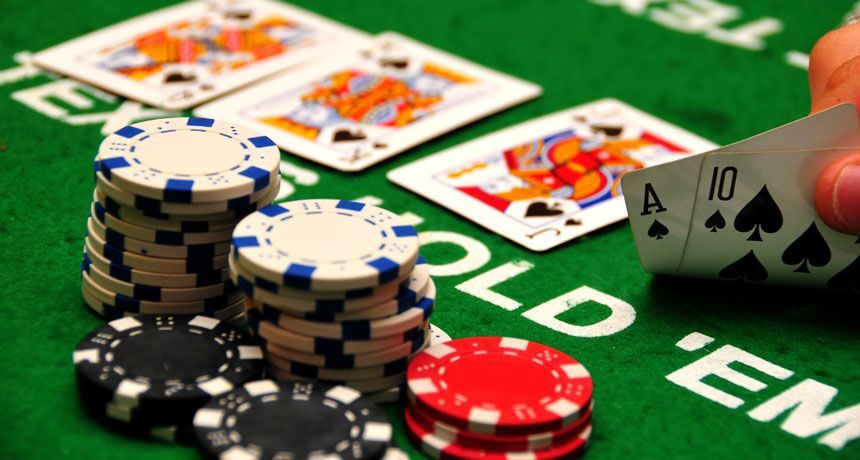Effectively Using a Polarized Range

Editor's Note: This was originally written for publication with the Two Plus Two forums online magazine. It is no longer available although a web cache still exists.
There seems to be a general sentiment in the poker community that having a polarized range tends to be exploitable and is therefore bad. These players tend to focus strongly on balancing and merging their ranges in an increased effort to avoid exploitation. While balance and merging certainly have their place, and being polarized can be exploited, there are some situations where polarizing your range can have the highest expectation and also be difficult to exploit.
Before I go on, let me take a moment and define specifically what I mean by polarized range in the context of this article. I consider a polarized range to have two components:
- It contains only very strong and very weak hands.
- It has similar proportions of strong and weak hands.
Situations in which you or an opponent has 90% bluffs and 10% nuts are not considered polarized by this definition, because they are disproportionately weighted towards bluffs.
Some conditions which need to be met before having a polarized range becomes a good response are:
- The percentage of strong value hands in your opponent's range which can beat the value portion of your polarized range is very small. Generally, this is because he is too loose.
- Your opponent is tough.
- You are out of position.
- You cannot outplay your opponent by simply having a strong value range which on average beats him.
These factors are indicative of the following generalized situation: Your opponent is too loose and you want to exploit that, but you cannot exploit him easily because he is tough or in position, or he otherwise has an advantage which makes simply playing a better value range difficult. Thus, the best way to widen your range while still protecting yourself and being able to play as close to the Fundamental Theorem of Poker as possible is to keep your value range strong, and add in some of your worst hands, polarizing your range to the very best and very worst of your hands. This allows you to exploit his looseness while still being able to play well.
If you are betting a very strong hand, you know you are likely ahead and can try to extract value. If you are betting a very weak hand, you know you are behind and that you are bluffing. You avoid being in a difficult situation because you always know where you are at. In addition, your opponent has difficultly responding because the best of his middle strength hands lose value, since they all fair the same against your range. (To take a contrived example, if your range includes only AA or 54s, then 66 and KK have similar all-in preflop equity.) You make extra money by bluffing your opponent, thus taking advantage of his looseness, but you protect yourself from being re-exploited. A significant portion of your range is still very strong, and you can play near-perfectly, since you always know whether you are bluffing or value betting. So while against a bad and loose opponent you would simply try to get the money in with a wider value range, against a tough and loose opponent you may opt to polarize your range.
There are two main times when a polarized range is generally used:
- Preflop re-raising wars
- Betting or raising big on the river
Fortunately, the nature of hold ‘em allows for very frequent river opportunities for polarization. When an obvious draw misses, a river bet or raise can be polarized by having either a missed draw or a strong two pair or set. When a draw hits, a river bet or raise can be polarized by having the nuts or near nuts, as well as a weak pair-turned-bluff or a missed non-obvious draw (like a straight draw when the flush comes in). These situations are highly context-dependent and occur frequently, so tread with caution when deciding what situations and opponents warrant a polarized range. Preflop polarization opportunities are less frequent because while even a tough opponent may often be too light on the river (sometimes without realizing it), most half way competent players these days are not prone to egregious preflop errors. If you start playing back at them, they will notice and adapt. (And if the player is not competent preflop, polarizing your range is unnecessary and costing your profit.)
Flop and turn polarization is generally unnecessary. Assuming you are a generally tight player, on a very dry flop, like K62 of different suits, a value raise usually represents only a set, ace-king, or aces, and maybe KQ or KJ. There are no other hands that you can have which are “monsters”. Therefore, an opponent who is not good enough to adjust his hand's value based on the board texture will often be forced to give up to pressure on such a board. However, your raising range on that flop against such an opponent is not polarized; it is almost entirely bluffs unless you just happen to have a set. Against a good opponent, you may indeed have to polarize your range on a flop like that, cutting your bluffing frequency to a very low number, since the hands you can play for value on that flop are also very low.
On a drawy flop, like 965with a flush draw, against most opponents, you should generally refrain from out-right bluffing with no equity, since with such a coordinated texture, you often have, and your opponent will often have, hands with a lot of equity. All kinds of flush draws, straight draws, overpairs, and pair plus draws are possible on that board, and thus high equity semi-bluffing opportunities abound. This gives you ample bluffing opportunities against even tough players, and rather than having a polarized range to make your decisions easier against a difficult player, you should instead bet or raise an amount that makes your decision easy with a non-polarized range that has decent equity.
Turn play, for the purposes of discussing polarization, can be related to both flop play and river play. Like the flop, the board texture and opponent will tell you whether you should have a polarized rage and how to proceed, and like the river, obvious draws and scare cards may come which allow you to represent a specific and narrow range of value hands. But, as noted earlier, most flop and turn play is not going to require any polarization against even good players. Polarizing your range is a one-move tactic because all play on later streets is made in the context of having a very narrow value range, and barreling future streets is merely a continuation of that story. Most of the time, postflop play will tell a different story than “I either have a monster or nothing.”
It is important to reiterate that in order to have a properly polarized range, you must have similar amounts of bluffs as value hands, and the frequency of your bets must not be too high or too low. In the K62 rainbow flop example given above, when you raise, even though you are representing only bluffs or very strong hands, you are going to be bluffing far more often than you are going to have a real hand. In that situation, your range isn't polarized, it's just mostly bluffs. If you are against a tough opponent who knows how few value hands like that flop, then you might cut your bluffing frequency down to match how often you have a big hand. At that point, your range is polarized.
Another example of a non-polarized range would be when your value range is very wide, and then you add in a proportional amount of bluffs. At that point, your range, while technically “polarized,” is simply super wide and subject to being exploited by waiting for a hand. That is, if you play the top 30% and the bottom 30% of hands, you're not so much polarized as super-loose. And if you're playing against an opponent where you can get value from the top 30% of hands, bluffing him is not going to be wise!
Polarization only occurs when the frequency of your bluffing and value betting is similar, but not so tight or loose that you can still be directly exploited by your opponent based on the frequency of your betting. For example, if you are “polarized” but too tight (playing only aces, kings, and 52o), he can steal your blinds incessantly. If you're too loose (top 30% and bottom 30%), he can afford to just wait for a decent hand and figure to profit by the fact that you are putting money in the pot too often. In order to be polarized in a given situation, your total frequency of betting should not in itself be open to exploitation.
As with all poker, you want to have the most equity possible, so when you polarize your range, you want bluffing hands (the bottom pole of our polarized range) to be as high equity as possible while still being “bluffs”. Thus preflop, instead of a range akin to (QQ+,AK,72o,62o,52o), a range of (QQ+,AK,53s-86s,43s-87s) is preferable. Each range has the same number of combos, but against a value range of (TT+,AK), the bluffing range of (72o,62o,52o) has equity of 20.2%, while (53s-86s,43s-87s) has 27.7%. Both ranges are fairing poorly—they are bluffs after all—but having the suited-connectors is far better, and not just for the extra 7.5% equity. Assuming a deep enough game with money behind after a polarized three- or four-bet, if the bet is called, at least some of our postflop betting frequency can be based on if we flop or turn some kind of a draw. This tempers our betting frequency and strengthens our overall range (since even our bluffing equity is higher), and makes it that much more difficult for an opponent to play back at you light. While bad players may espouse “being suited is only worth four percent,” what they fail to realize is that being able to stay aggressive with a strong draw, and having that added equity in your range, is worth far more than just the equity-value of the hand. Similarly, if you are against a tough opponent and have a polarized range on the K62 flop listed above, you want to have all those low gutshots (54 and 43) in the bluffing portion of your range. Turning a complete loss into a big win, even occasionally, is worth a lot.
Editor's note: later research and mathematical analysis (by me) has determined that the “bluffs” portion of a polarized range should consist of hands just below the threshold for hands that would be acceptable to call with, and the ratio of good hands to bad hands should be approximately 2:1 rather than 50-50.
